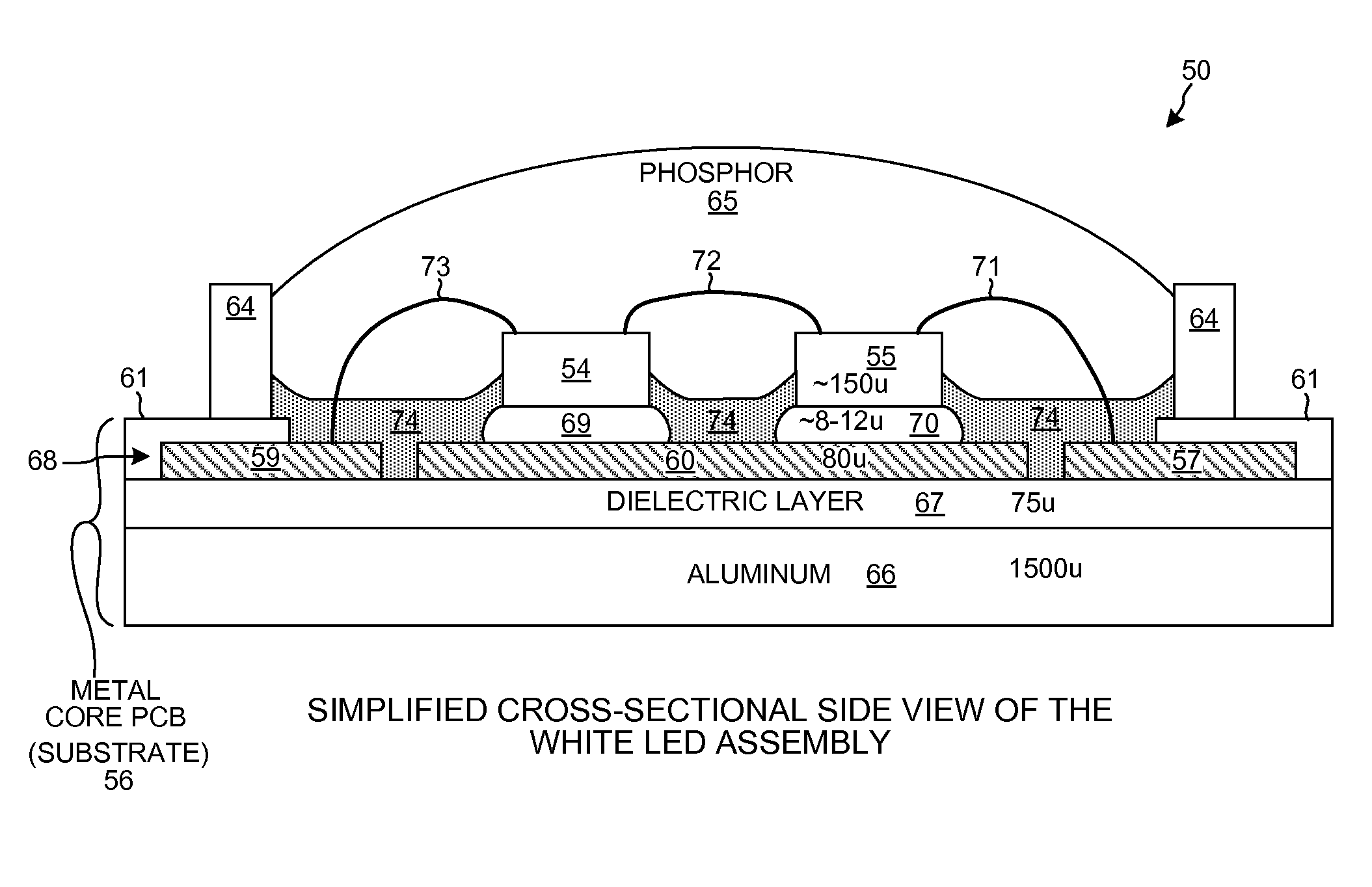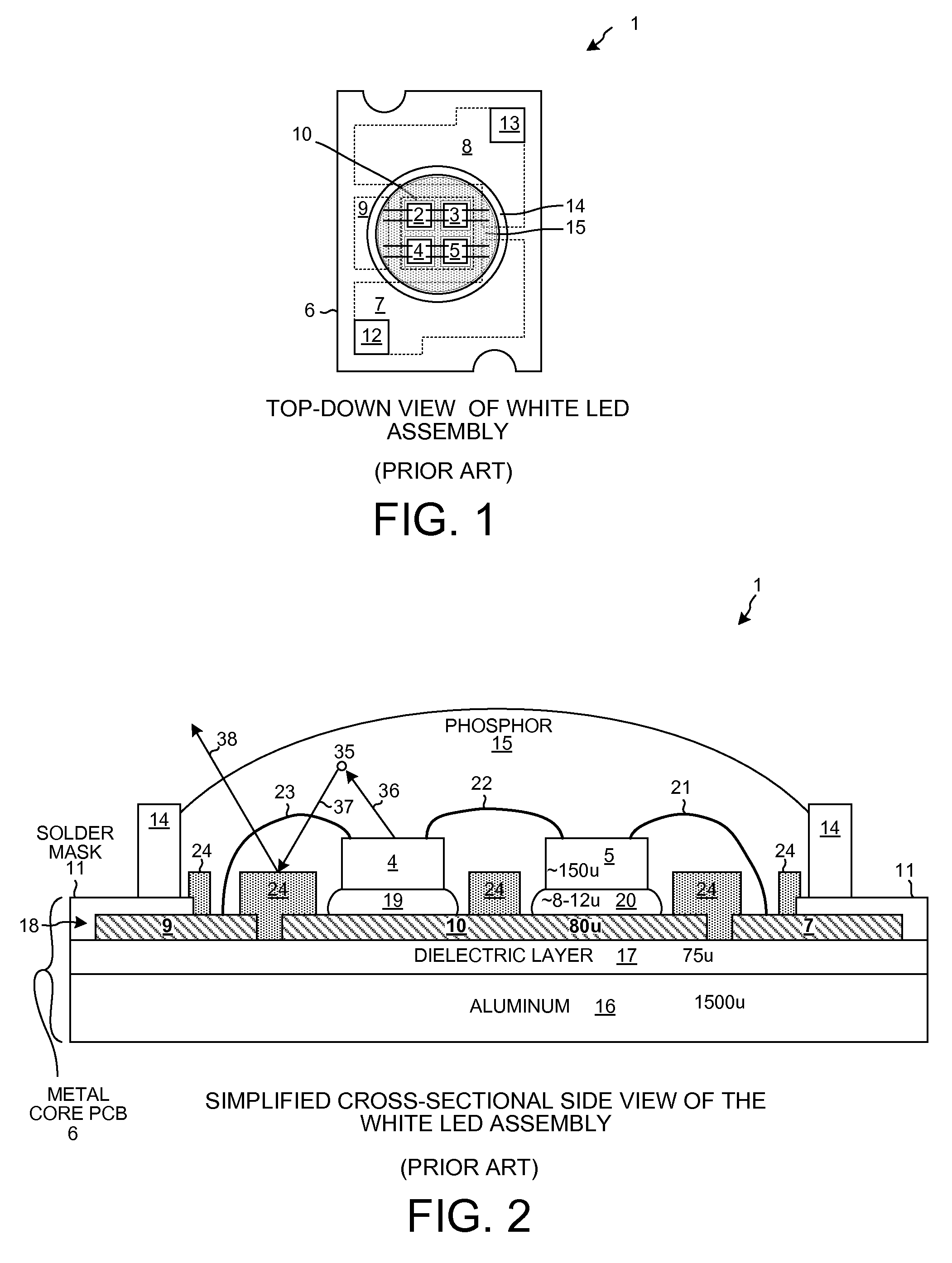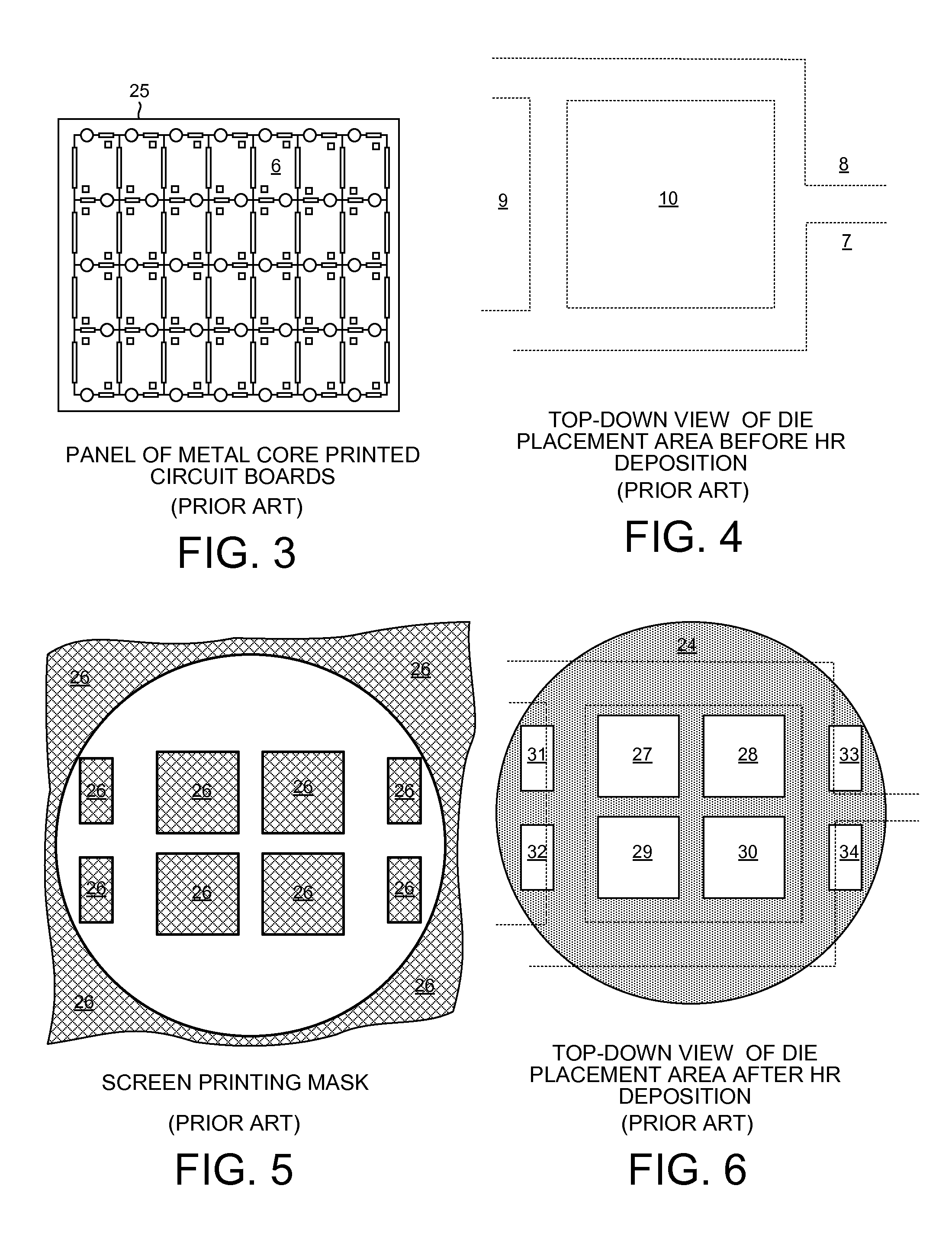Jetting a highly reflective layer onto an LED assembly
a technology of led assemblies and reflective layers, applied in the direction of basic electric elements, semiconductor devices, electrical equipment, etc., can solve the problems of physical differences between led assemblies being manufactured, and achieve the effects of reducing the amount of exposed substrate area, reducing manufacturing time, and low viscosity
- Summary
- Abstract
- Description
- Claims
- Application Information
AI Technical Summary
Benefits of technology
Problems solved by technology
Method used
Image
Examples
Embodiment Construction
[0035]Reference will now be made in detail to some embodiments of the invention, examples of which are illustrated in the accompanying drawings.
[0036]FIG. 11 is a simplified top-down diagram of a white Light Emitting Diode (LED) assembly 50 in accordance with one novel aspect. LED assembly 50 includes four laterally-contacted LED dice 52-55 that are mounted on a substrate 56. In the present example, the substrate is a Metal Core Printed Circuit Board (MCPCB). Areas 57-60 illustrated in dashed lines represent portions of a metal layer 68 that is disposed underneath a solder mask layer 61 (see FIG. 12). Reference numeral 62 identifies a portion of metal portion 57 that is exposed through a first opening in solder mask layer 61. Reference numeral 63 identifies a portion of metal portion 58 that is exposed through a second opening in solder mask layer 61. These exposed portions 62 and 63 serve as bond pads. Ring structure 64 is a retaining ring of silicone. An amount of phosphor 65 is d...
PUM
| Property | Measurement | Unit |
|---|---|---|
| reflectivity | aaaaa | aaaaa |
| thick | aaaaa | aaaaa |
| diameter | aaaaa | aaaaa |
Abstract
Description
Claims
Application Information
 Login to View More
Login to View More - R&D
- Intellectual Property
- Life Sciences
- Materials
- Tech Scout
- Unparalleled Data Quality
- Higher Quality Content
- 60% Fewer Hallucinations
Browse by: Latest US Patents, China's latest patents, Technical Efficacy Thesaurus, Application Domain, Technology Topic, Popular Technical Reports.
© 2025 PatSnap. All rights reserved.Legal|Privacy policy|Modern Slavery Act Transparency Statement|Sitemap|About US| Contact US: help@patsnap.com



